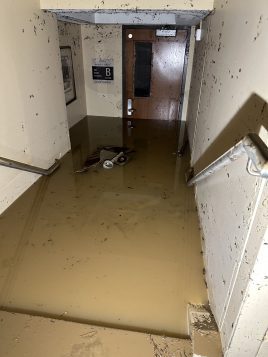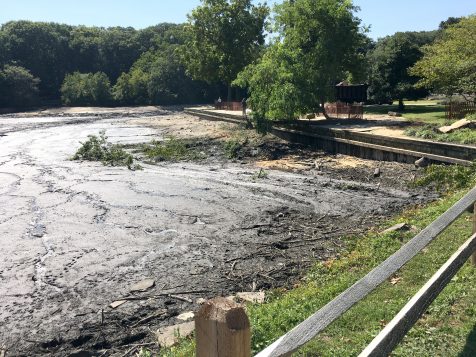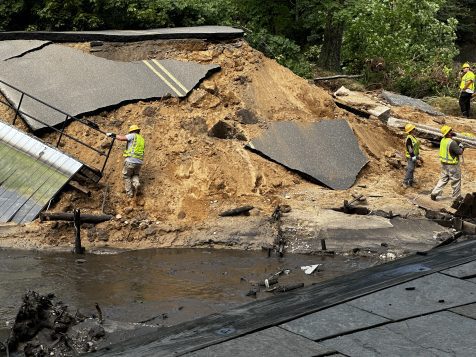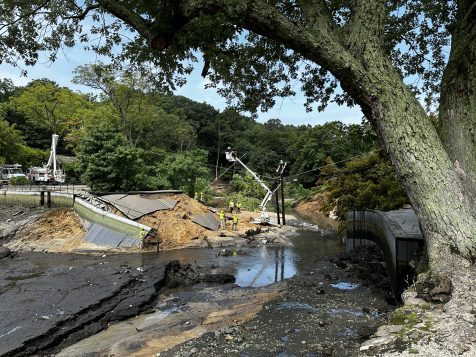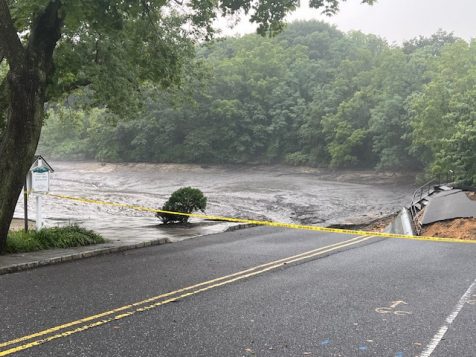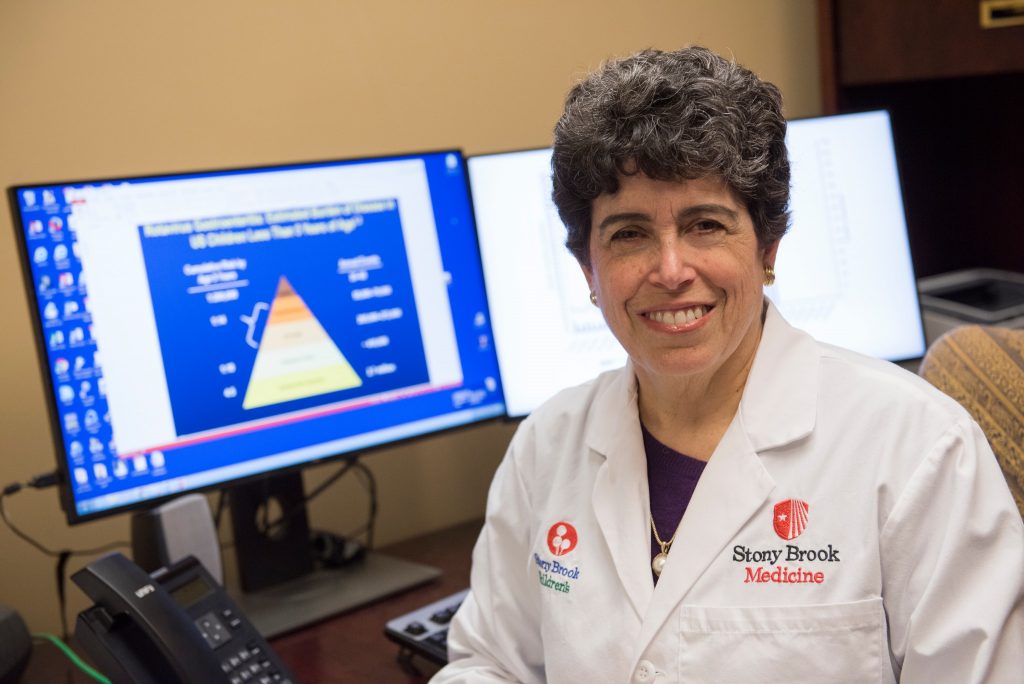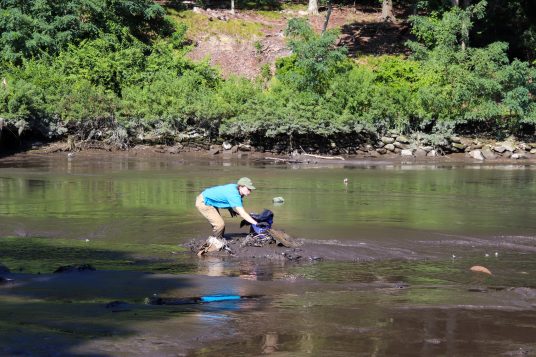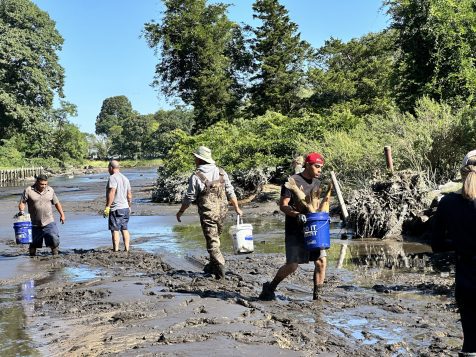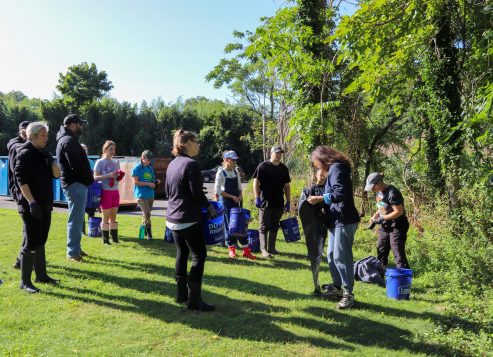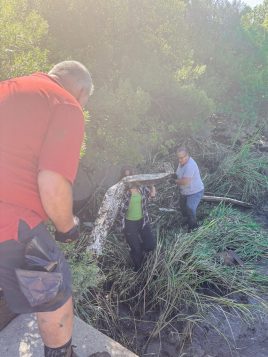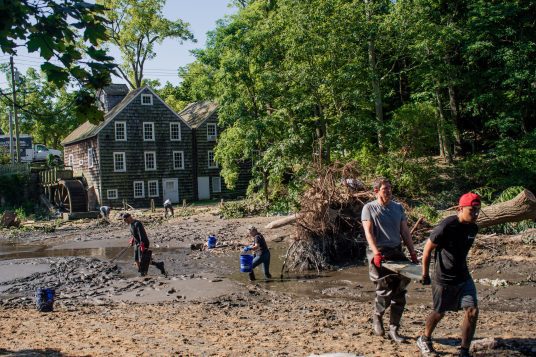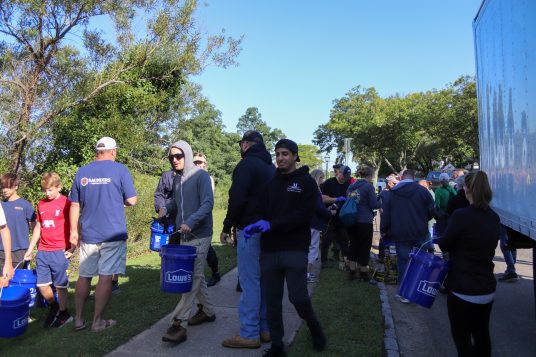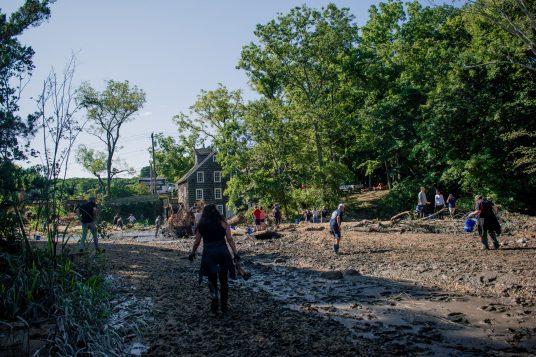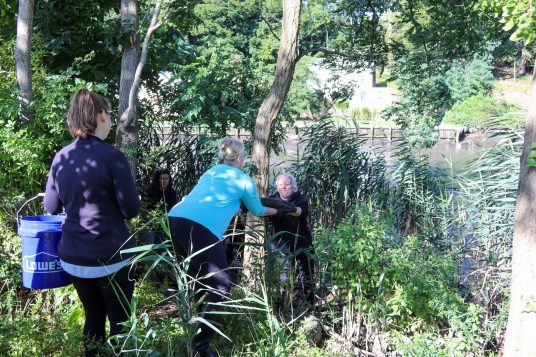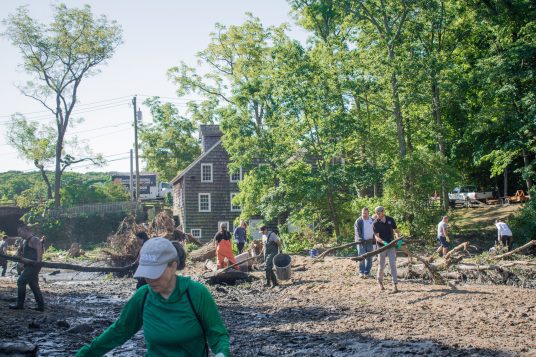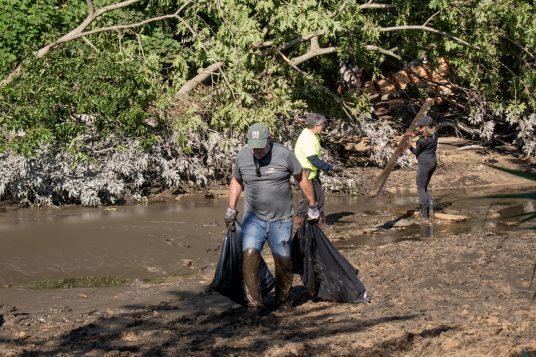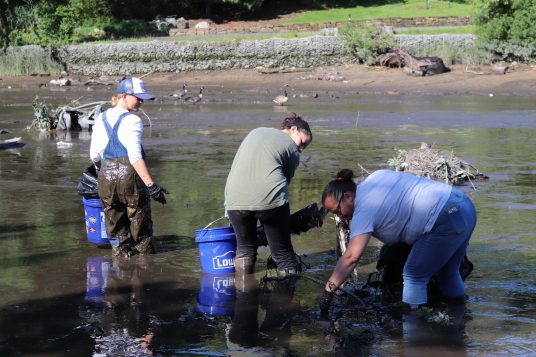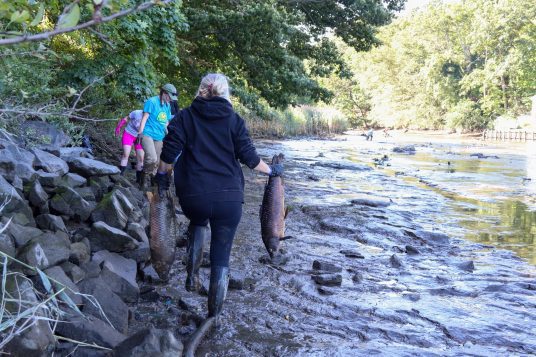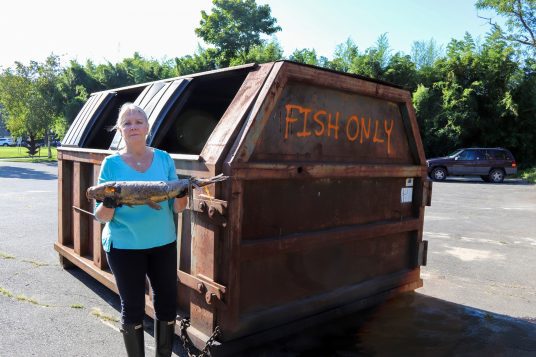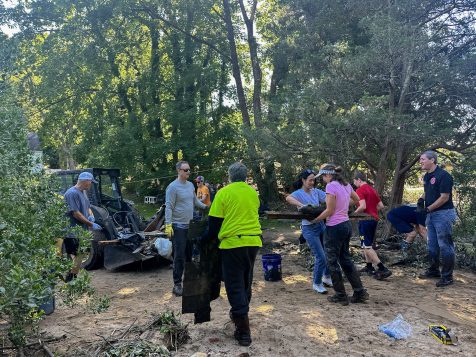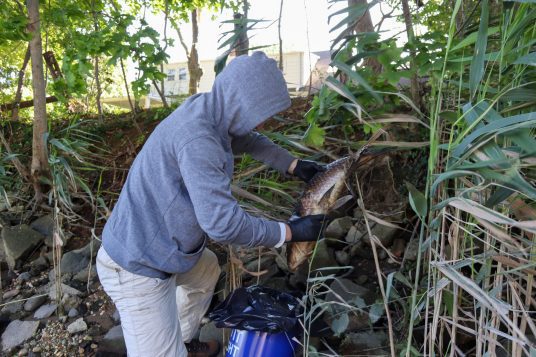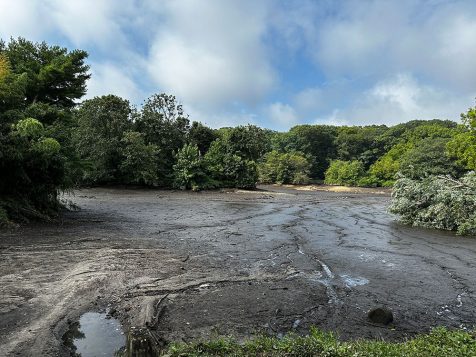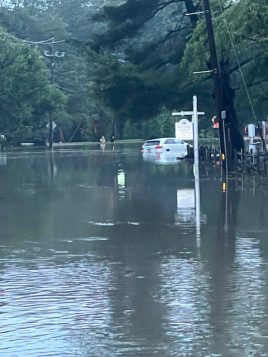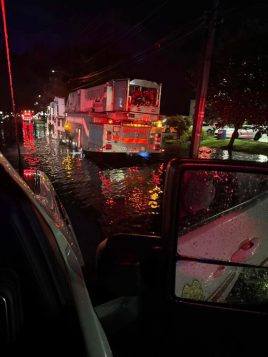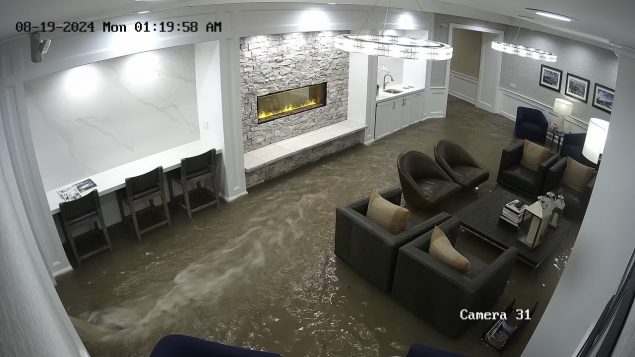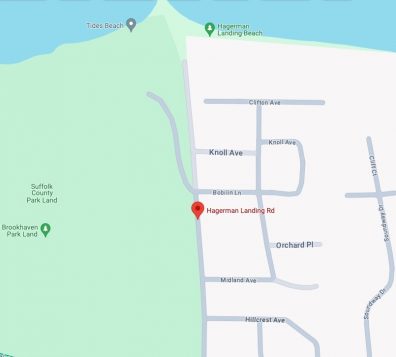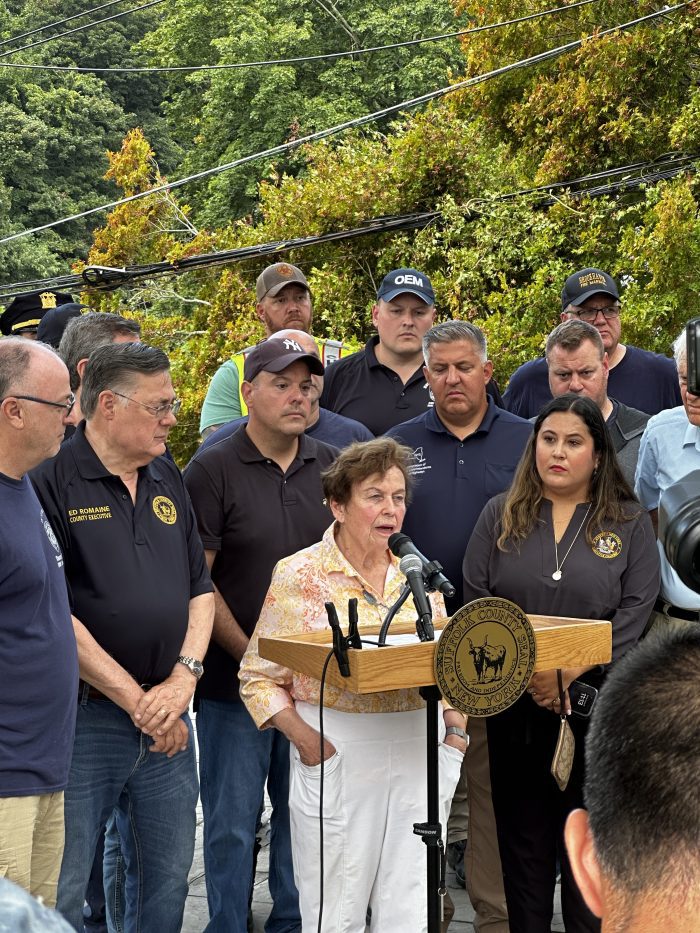By Toni-Elena Gallo
The Smithtown Library is in disarray after the early morning hours of the Aug. 19 blindsiding storm that dropped at least 9 inches of rain on a chunk of Suffolk’s North Shore and caused flooding of dire proportions.
Rob Lusak, director of the library, described some of the catastrophic damage.
“On Monday, the water literally filled up to the ceiling,” he said. “On the lower level, water came rushing in with such pressure that it smashed through a double-hung window. We got to work at 7 a.m., and couldn’t even get into the lower level until 4:40 [that afternoon]. That’s when we began recovery mode.”
Rainbow Restoration, a flood remediation company, was called in to extract the water clogging up the stairwells, while the Smithtown Fire Department pumped out even more.
“Once the water made its way down, it settled in the stairwells,” Lusak said. “I mean, when you get about 11 inches of rain, in two hours … . And worse than that was the sludge — the muddy, wet sludge that filled everything up — the sheer amount of that water. It cannot be caught by storm drains and lawns. It just can’t.”
The library was far from the only location in the area hit hard by this once-in-a-lifetime storm, as “Smithtown Town Hall got 4 or 5 feet of water,” he added.
The damage to the library is — to put it lightly — extensive.
Lusak’s “guesstimate” of costs is around $10 million which would include the replacement of the LearnLab, an area that was equipped with 3D printers and computers, among other equipment, also carpets, sheetrock, etc. More or less, an entirely new lower level.
“We’ll be down to concrete and steel studs,” he said.
As of Aug. 27, the library still had no power. In the interim, employees have been relocated to the other libraries within The Smithtown Library family at Nesconset, Commack and Kings Park that were not badly affected by the storm.
Perhaps the most devastating impact this storm has had is on the library’s Richard H. Handley Collection of Long Island Americana. Full of priceless documents, this area of the library contained a vault that included documents from Richard Smith — the founder of the town — and paperwork signed by Thomas Jefferson.
That section of the library was hit the harshest of all, with flooding penetrating the vault and harming the artifacts.
However, there is hope for this one-of-a-kind archive.
“We were very lucky to have an archivist fly in from Detroit, to look at our crown jewels,” Lusak said. “He thinks they can be fully restored. Two tractor trailers pulled up, which took all of the artifacts in tubs, back to Detroit. The trucks are freezers, actually. Once they arrive, they will be thawed, sanitized and restored. But, it will be at least a year before we see them again.”
As for what’s next, Lusak said that Suffolk County Executive Ed Romaine’s (R) Aug. 19 State of Emergency Declaration, and Sunday’s approval of Gov. Kathy Hochul’s (D) request for a federal Emergency Declaration were instrumental in getting things moving.
According to the state’s website (www.ny.gov), this declaration will allow “direct federal assistance,” through FEMA, “to provide emergency protective measures, including actions to protect critical infrastructure such as roads and bridges, water control facilities, utilities and mass transit facilities.” Additionally it will allow “disaster recovery experts … to work with local and federal partners, to determine the state’s ability to request a federal Major Disaster Declaration and low-interest loans from the U.S. Small Business Administration.”
Lusak said that the library’s insurance has been contacted, and papers have been submitted: “We are cleaning up, and we will rebuild. Better than ever.”



